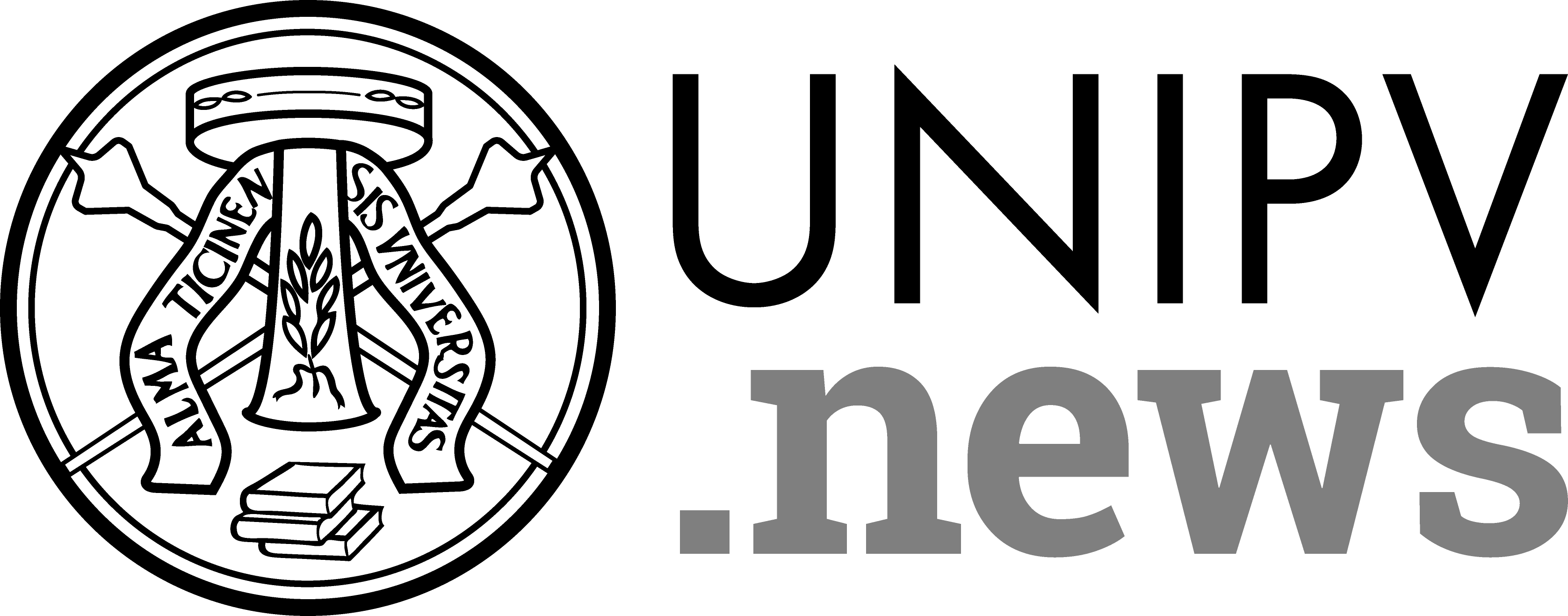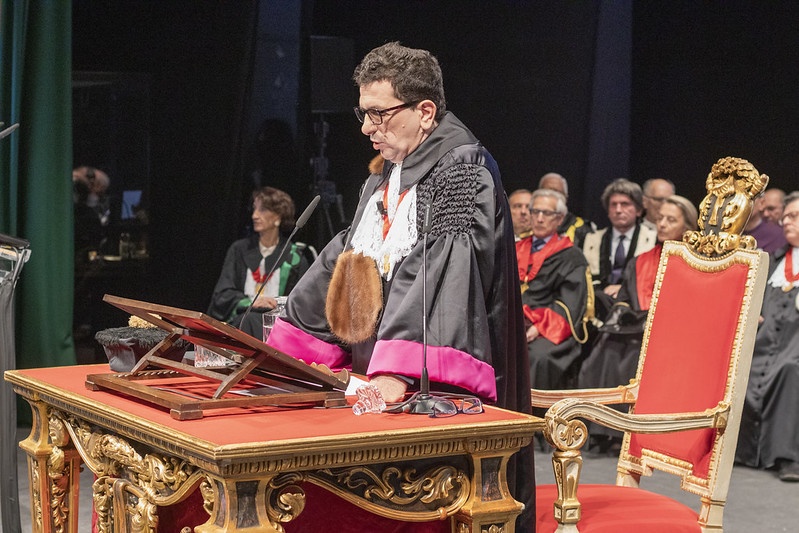Care Colleghe e cari Colleghi, care Studentesse e cari Studenti,
sono passati esattamente tre mesi dall’inizio dell’epidemia, cioè da quel giovedì 20 febbraio in cui proprio una nostra laureata in Medicina e Chirurgia, la dott.ssa Annalisa Malara, ha diagnosticato a Codogno il primo caso di infezione da Covid-19 (il “paziente 1”). (English below)
Ricordo questo episodio perché è il primo di tanti contributi di valore che, in questa drammatica emergenza, sono stati portati da persone che si sono formate o che lavorano nel nostro sistema pavese in cui università e sanità si integrano e completano reciprocamente.
Ora siamo entrati in una fase nuova che è altrettanto delicata quanto quella che abbiamo attraversato. Dalla Comunità accademica deve passare un messaggio di grande ascolto alle indicazioni scientifiche, a beneficio della salute dei cittadini. Anche e soprattutto in un momento in cui la giusta apprensione per l’andamento dell’economia e la stanchezza psicologica potrebbero portare ad allentare l’attenzione. La grande collaborazione e lo sforzo tangibile che l’intero Ateneo, in tutte le sue componenti, ha mostrato in questi mesi mi rende ottimista circa la voglia di costruire un percorso per il futuro che sia anche occasione di rilancio per l’intero territorio.
Questi ultimi tre mesi ci hanno anche insegnato tanto di noi, per esempio il fatto che noi non siamo una università telematica, ma molto di più. Non ci poteva essere occasione più chiara per constatare quanto lo scambio diretto docente-studente e la relazione interpersonale tra studenti, possibili solo in presenza, siano insostituibili per la crescita non solo formativa, ma anche umana.
Riaffermo, con convinzione, la volontà di riprendere le lezioni in presenza nel prossimo anno accademico, non appena le condizioni di sicurezza sanitaria lo consentiranno.
L’incertezza sull’andamento dell’epidemia ci porta a prevedere comunque anche l’erogazione a distanza con il dichiarato scopo di essere inclusivi nei confronti di tutti gli studenti, in particolare se provenienti da altra regione, con eventuali difficoltà di spostamento.
Pertanto, le lezioni del primo semestre del prossimo anno accademico saranno erogate in forma mista: sia a distanza che in presenza. Abbiamo già iniziato ad attrezzare le aule per trasmissioni e registrazioni.
Un gruppo di lavoro ha predisposto le prime indicazioni sulla didattica per il nuovo anno accademico, approvate dal Senato lo scorso lunedì, ed elaborerà linee-guida più dettagliate per i Consigli didattici. In ogni caso, il contributo progettuale di ogni docente sarà cruciale.
Due sono le modalità che i diversi corsi di laurea potranno adottare in autonomia: didattica mista a piccole classi e didattica mista a rotazione.
Nel primo caso, il singolo insegnamento sarà articolato in due parti. Alcune lezioni saranno svolte all’intera classe in modalità a distanza. Mentre per le restanti lezioni gli studenti si suddivideranno in classi più piccole, ciascuna con un diverso docente, così da approfondire gli argomenti o svolgere esercizi (anche queste lezioni saranno comunque disponibili online per chi non potesse frequentare).
Il metodo a rotazione prevede invece che gli studenti del medesimo insegnamento si suddividano in sottogruppi e si alternino nella presenza in aula. Ad esempio, se il corso di laurea scegliesse una alternanza su base settimanale e la classe fosse divisa in due sottogruppi, nella prima settimana il sotto-gruppo 1 andrebbe in aula e il sotto-gruppo 2 seguirebbe da remoto; e nella seconda settimana il sotto-gruppo 2 andrebbe in aula e il sotto-gruppo 1 seguirebbe da remoto. Così che tutti gli studenti possano avere un contatto diretto con il docente e i colleghi. Anche in questo caso tutte le lezioni sarebbero comunque disponibili online.
Numerosità delle classi piccole e dei sotto-gruppi saranno stabilite con il fine di garantire un minimo tasso di occupazione delle aule, rispettando le normative relative al distanziamento fisico.
Va aggiunto che in queste settimane la grande e doverosa attenzione per studenti e didattica non è avvenuta a scapito della ricerca. Appena è stato possibile, abbiamo favorito l’accesso a laboratori e biblioteche. Seppure con severe regole di sicurezza, la ricerca sta riprendendo completamente. Poi, auspicando che il contenimento del contagio si confermi, accoglieremo a breve anche gli studenti in tesi di laurea.
Infine, voglio ricordare la scelta dell’Ateneo di destinare la raccolta del 5 per mille interamente a favore di borse di studio per studenti meritevoli, ma in difficoltà economica. Infatti, la grave crisi che tutto il Paese sta vivendo potrebbe ripercuotersi sulla possibilità di iscriversi all’università o proseguire negli studi.
Sono consapevole che numerose sono le iniziative meritevoli di sostegno, ma considerate seriamente di aiutare tanti giovani negli studi, dimostrando di credere nella vostra Università.
Un caro saluto.
Francesco Svelto
Rettore dell’Università di Pavia
Messaggio del Rettore 20.05.20
***
Dear Colleagues and Dear Students,
exactly three months have passed since the beginning of the epidemic; that Thursday 20 February, when one of our graduates in Medicine and Surgery, Dr. Annalisa Malara, diagnosed the first case of Covid-19 infection in Codogno (the “patient 1”).
I remember this episode because it is the first of many valuable contributions that, in this dramatic emergency, have been brought by people who have trained or who work in our “Pavia system”, in which universities and healthcare integrate and complement each other.
Now we have entered a new phase which is just as delicate as the one we have gone through. From the academic community we expect a message of great listening to scientific indications, for the benefit of the health of citizens even and especially at this time, when the apprehension for the economic trend and psychological fatigue could lead to loosing attention. The great collaboration and the tangible effort that the entire University, in all its components, has shown in recent months makes me optimistic about the desire to build a path for the future that is also an opportunity for revitalizing the entire territory.
These last three months have also taught us a lot about us, for example the fact that we are not a telematic university, but much more. There could not have been a clearer occasion to ascertain how much the direct teacher-student exchange and the interpersonal relationship between students, possible only in the presence, are irreplaceable for not only educational but also human growth.
I reaffirm, with conviction, the desire to resume face-to-face classes in the next academic year, as soon as the conditions of health security allow it.
The uncertainty about the trend of the epidemic leads us, however, to provide them also online with the purpose of being inclusive towards all students, especially if coming from another region, with any difficulty in travelling.
Therefore, the lessons of the first semester of the next academic year will be delivered in a mixed form: both online and in presence. We have already started to equip the classrooms for live streaming and recordings.
A working group has prepared the first indications on teaching for the new academic year, approved by the Senate last Monday, and will elaborate more detailed guidelines for the Didactic Councils. In any case, the contribution of each teacher to this project will be crucial.
There are two ways that the different degree courses can adopt independently: blended teaching in small classes and blended teaching in rotation.
In the first case, the single course will be divided into two parts. Some lessons will be conducted remotely for the entire class. While for the remaining lessons the students will be divided into smaller classes, each with a different teacher, so as to deepen the topics or carry out exercises (these lessons will still be available online for those who cannot attend).
The rotation method, instead, provides for students of the same course to alternate their presence in the classroom. For example, if the degree course chooses an alternation on a weekly basis and the class is divided into two subgroups, in the first week sub-group 1 will go to the classroom and sub-group 2 will follow remotely; and in the second week sub-group 2 will go to the classroom and sub-group 1 will follow remotely.
This way, all students can have direct contact with the teacher and colleagues. Again, all lessons will be available online.
The number of small classes and sub-groups will be established with the aim of guaranteeing a minimum occupancy rate of the classrooms, respecting the regulations concerning physical distancing.
It should be added that in recent weeks the great and due attention for students and teaching has not compromise our research. As soon as possible, we allowed access to laboratories and libraries. Although with strict safety rules, research is picking up completely. Then, hoping that the contagion containment will be confirmed, we will soon welcome also the students who are writing the final thesis.
Finally, I want to remind you of the University’s choice to allocate the “5 per thousand” (5 per mille) entirely in favour of scholarships for best students, who have economic difficulties. In fact, the serious crisis that the whole country is experiencing could have repercussions on the possibility of enrolling in university or continuing to study.
I am aware that there are many initiatives worthy of support, but you may seriously consider helping many young people to study, showing that you believe in your University.
Kindest Regards,
Francesco Svelto
Rector of the University of Pavia




